Suwen Wang
Where do you live: London
Your education: MA in Digital Direction, MRes in Communication, Royal College of Art
Describe your art in three words: Immersive, Reflective, Poetic
Your discipline: Immersive Media Art / Multisensory Digital Storytelling / Interactive Installation
Website | Instagram
What inspired you to create “Echoes of the Displaced”? Was there a specific moment or artifact that initiated the project?
I was born and raised in an ancient Chinese town that has existed for more than two thousand years. It is a place where history breathes through the soil, tombs, relics, and weathered remnants of past dynasties surround the everyday lives of its residents. From a very young age, I found myself drawn to museums, archaeological sites, and the silent allure of ancient objects. However, I also grew increasingly aware of the dark undercurrent of looting and cultural destruction that has ravaged many of these sacred places. Tombs were violently opened, entire mountains were hollowed out for treasure, and cultural relics were smuggled and sold to the highest bidder. As I walked through museums filled with dazzling artifacts, I often found myself wondering whether these objects, these fragments of civilizations, missed their original landscapes. Did they feel dislocated, uprooted, forgotten? That lingering sense of loss, of cultural estrangement, planted a seed in my mind. I began to imagine cultural artifacts not as passive exhibits but as displaced beings, each with their own emotional trajectory and voice waiting to be heard. This emotional disconnection between the artifact and its homeland, and between the past and our present, inspired me to explore new ways of reconnecting them. That’s why I turned to digital storytelling, a medium where image, sound, and narrative can merge to form immersive experiences. Through this practice, I aim to foster cultural empathy and emotional reconnection, not only with the artifacts themselves but also with the broader histories and communities they represent.
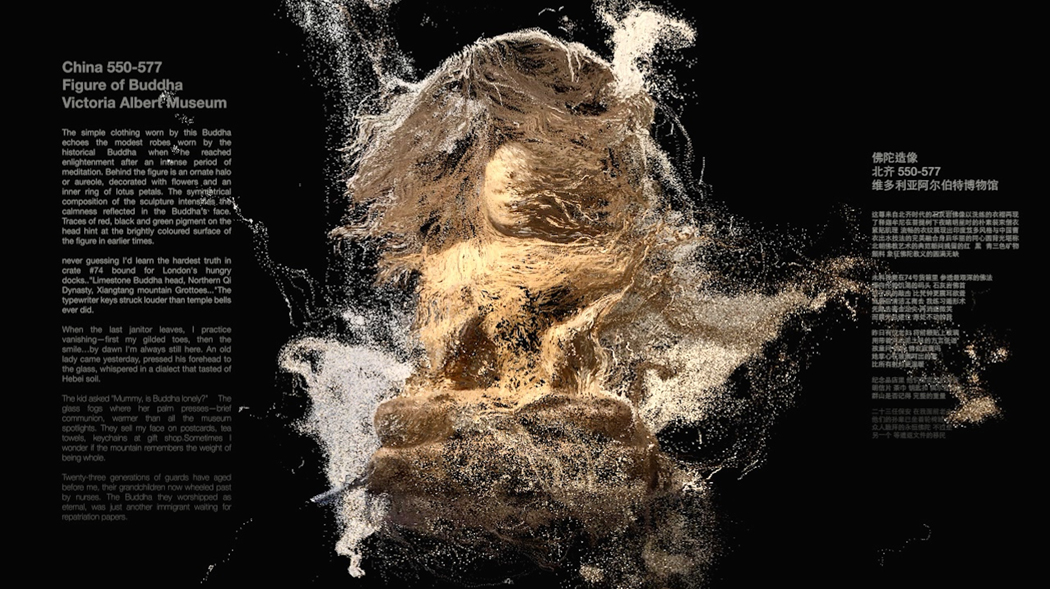 Suwen Wang | Echoes Of The Displaced Experimental Filming | 2025
Suwen Wang | Echoes Of The Displaced Experimental Filming | 2025
Your work gives voice to silent cultural artifacts. How do you choose which objects to “animate” and tell stories through?
The selection process is deeply intuitive, guided by the emotional weight an artifact seems to carry. I don’t necessarily prioritize objects based on aesthetic appeal or historical fame. Instead, I look for subtle signs of lived experience, damage, displacement, restoration, or even absence. Some artifacts, such as decorative scrolls or abstract patterns, might not lend themselves easily to emotional storytelling due to their minimal figuration or lack of context. But others, especially those that feature human figures, faces, or scenes, often feel more like frozen moments with narrative potential. I am particularly drawn to pieces that have undergone some kind of transition: they may have been unearthed after centuries of burial, stolen and recovered, broken and carefully pieced back together. These life-like trajectories form a kind of biography, a record of survival and silence. They evoke a powerful emotional resonance, which makes them ideal vessels for storytelling. I imagine them not just as objects, but as witnesses of time.
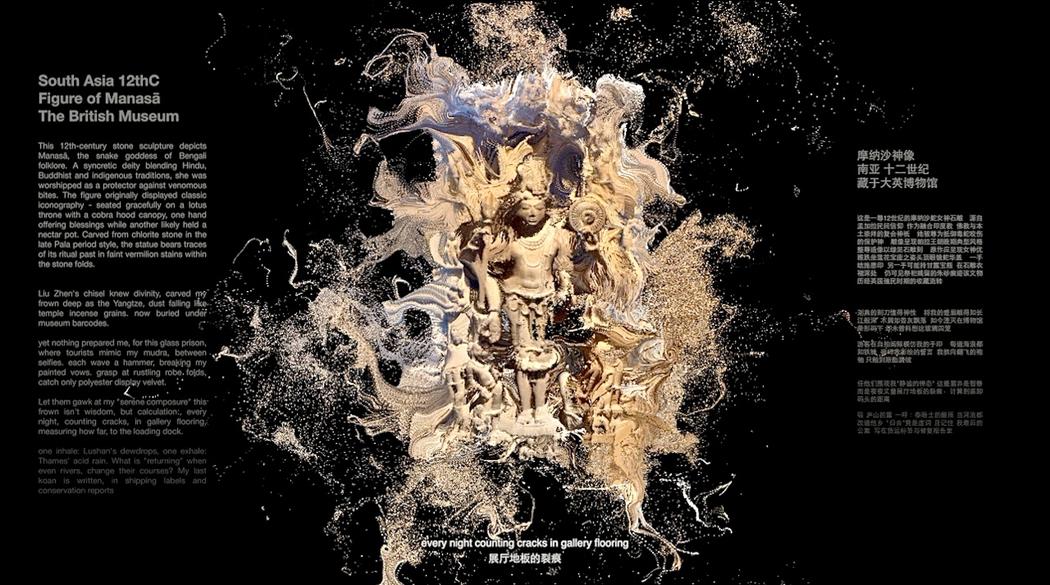 Suwen Wang | Echoes Of The Displaced Experimental Filming | 2025
Suwen Wang | Echoes Of The Displaced Experimental Filming | 2025
What role does AI play in shaping the emotional tone and voice of your digital storytellers?
Artificial Intelligence plays a central and multi-faceted role in my storytelling practice. One of the most critical aspects is voice design. I use advanced voice synthesis tools such as Resemble AI to craft highly customized narrations. These tools allow me to control the voice’s tone, rhythm, pitch, and emotional texture, which helps create a persona that matches the artifact’s history and imagined emotional world. For example, a fragmented sculpture might have a voice that sounds broken, fragile, or breathless, while a bronze bell used in ceremonies might carry a deeper, more resonant tone. AI enables this nuanced control. Technically, I also incorporate other AI-driven tools such as image and video generation, 3D modeling, real-time scanning, and ambient sound synthesis. The storytelling process starts with writing scripts based on historical data, who made the object, when and where, how it was used, how it was displaced or damaged, and where it resides now. Then I reinterpret those facts through the lens of emotional imagination, asking: if this artifact could speak, what would it say? What would it remember, fear, or yearn for? AI gives form to those questions in a way that is both poetic and technologically expressive. My goal is to bridge historical fact with speculative empathy, allowing technology to act as both interpreter and amplifier of emotion.
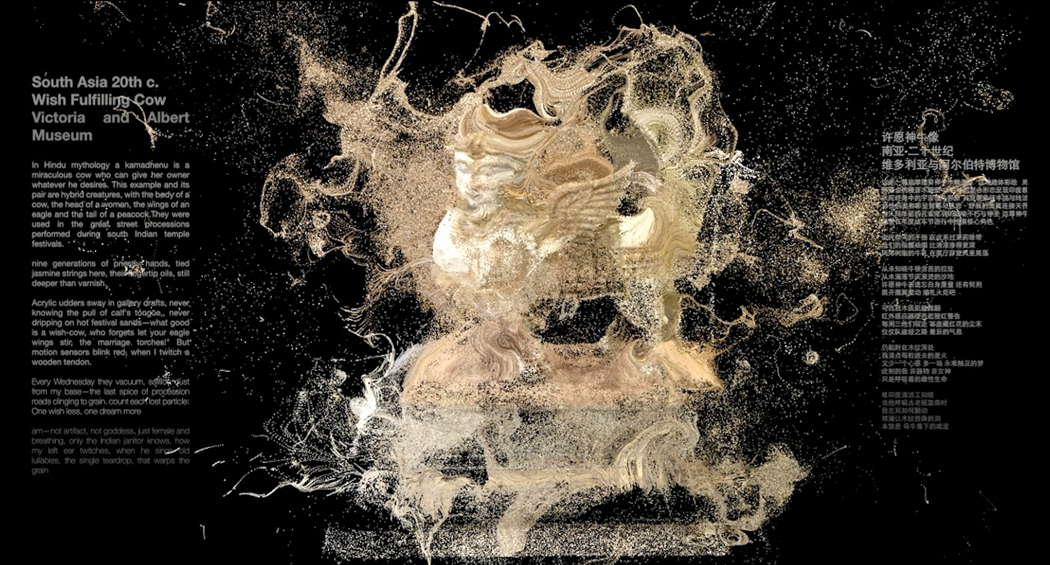 Suwen Wang | Echoes Of The Displaced Experimental Filming | 2025
Suwen Wang | Echoes Of The Displaced Experimental Filming | 2025
You mention a poetic relationship between AI and heritage artifacts. Can you elaborate on how you view that parallel?
At first glance, heritage artifacts and artificial intelligence seem to exist at opposite ends of the spectrum. One is ancient, often fragile and silent. The other is contemporary, data-driven, and synthetic. Yet, when I work with both, I begin to notice surprising similarities. Both are often viewed as non-living, lacking their own agency. Artifacts are frequently regarded as static museum pieces, while AI is treated as a machine, a tool with no intrinsic emotion. However, in my work, both become vessels for voice and meaning. When given a narrative structure and emotional context, AI-generated voices can express profoundly human experiences. Similarly, when an artifact is given voice, it becomes more than an object, it becomes a storyteller. The poetic relationship lies in this unexpected capacity for expression. Both AI and artifacts inhabit a space of silence, and both require human interpretation to come alive. My project tries to merge them in a way that creates emotional resonance, bridging the artificial with the historical, and the digital with the cultural. It is this fusion of time, materiality, and voice that I find both meaningful and poetic.
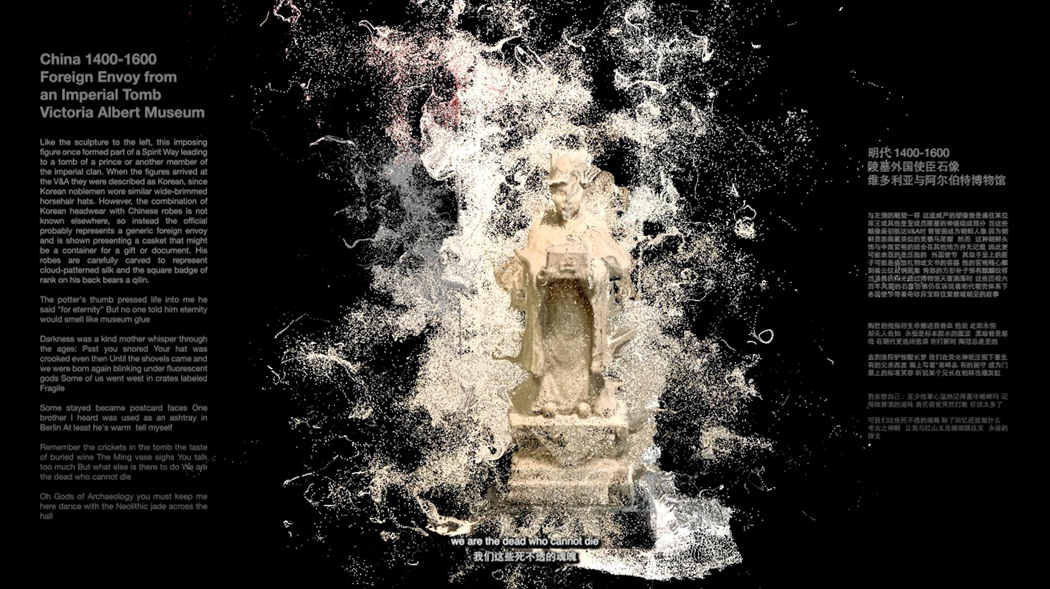 Suwen Wang | Echoes Of The Displaced Experimental Filming | 2025
Suwen Wang | Echoes Of The Displaced Experimental Filming | 2025
In your opinion, how can digital storytelling help shift public perception about looted or displaced cultural objects?
Digital storytelling has the power to humanize what is often perceived as distant or inert. By weaving sound, visuals, and narrative into a cohesive emotional experience, we can shift the way people engage with cultural objects. Rather than viewing an artifact as a static exhibit behind glass, storytelling invites the audience to enter its world, to hear its memories, its losses, and its fragmented identity. This fosters empathy, especially when people realize that the damage done to these objects mirrors the damage done to cultures and communities. When an artifact tells its story, it becomes harder to ignore the violence of its displacement or the colonial histories that shaped its journey. This emotional engagement can inspire more nuanced conversations around cultural restitution, heritage preservation, and the ethics of display. Audiences begin to ask harder questions, Why is this object here? Who does it belong to? What history is missing? I want digital storytelling to serve as a bridge between academic discourse and public understanding, bringing urgency and sensitivity to the issue of looted heritage.
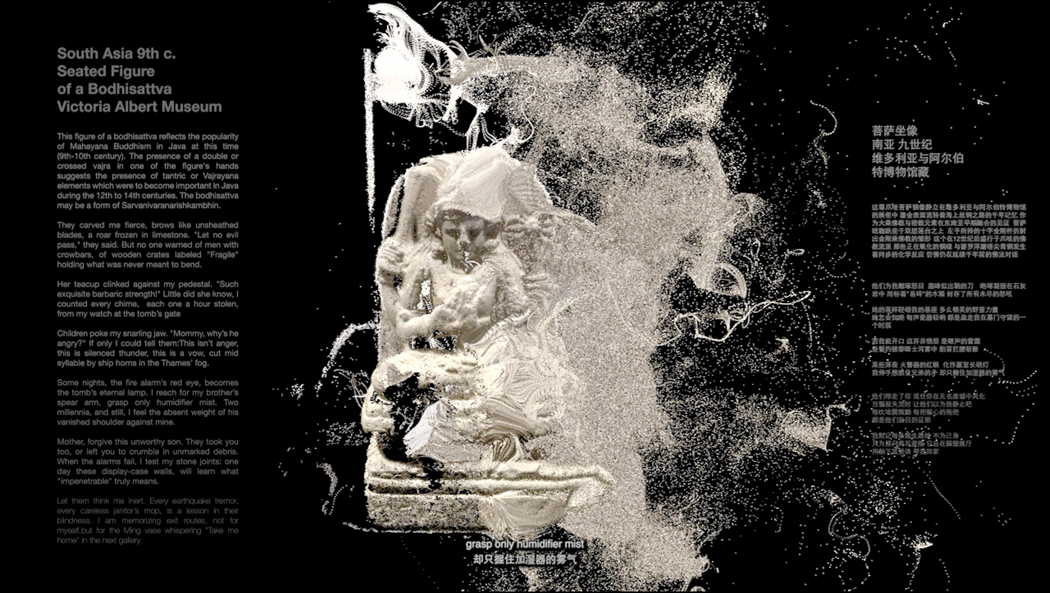 Suwen Wang | Echoes Of The Displaced Experimental Filming | 2025
Suwen Wang | Echoes Of The Displaced Experimental Filming | 2025
How do you balance artistic expression with historical accuracy, especially when interpreting the ‘inner lives’ of artifacts?
Balancing emotional speculation with factual grounding is a constant negotiation in my creative process. I start by conducting detailed research on each artifact, its historical context, geographical origin, materials used, and the circumstances of its current location. From there, I construct an interpretive framework that considers its journey across time. If an object was buried for centuries and then excavated, I might imagine it as feeling forgotten or reborn. If it was stolen or sold, perhaps it harbors a sense of loss or betrayal. These imagined emotional narratives are grounded in the object’s known experiences, not detached fantasy. Artistic liberties are taken, but always with care and responsibility. I also consult with historians, archaeologists, and curators when possible to ensure that the core facts remain accurate. The goal is not to fictionalize history, but to make its silence emotionally legible. It’s about interpreting the invisible with integrity, using artistic tools to create empathy without distorting truth.
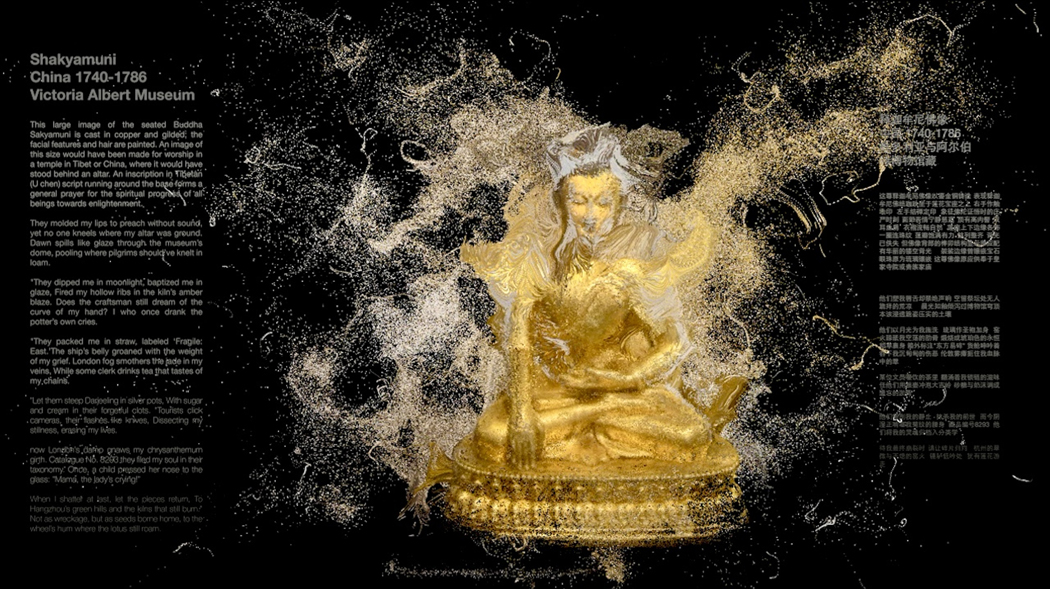 Suwen Wang | Echoes Of The Displaced Experimental Filming | 2025
Suwen Wang | Echoes Of The Displaced Experimental Filming | 2025
How do audiences typically respond to the “voice” of an object? Have any reactions surprised you?
Audience reactions have often been more emotional than I expected. Many people are visibly moved when they hear an artifact speak for the first time, especially when the voice is imbued with sadness, longing, or nostalgia. One common reaction is disbelief that the voice is AI-generated. People assume it’s a human actor and are surprised to learn otherwise. That moment of realization where the artificial is indistinguishable from the real, opens up a space for reflection. It mirrors the broader question my work poses: what do we consider to be alive? What do we consider worthy of empathy? The blurred line between authenticity and simulation creates a powerful emotional tension. In a few instances, visitors have said they felt as if the object was addressing them personally, almost like a confession or a letter from the past. These reactions affirm the potential of digital storytelling not only as an educational tool but also as a deeply human experience.

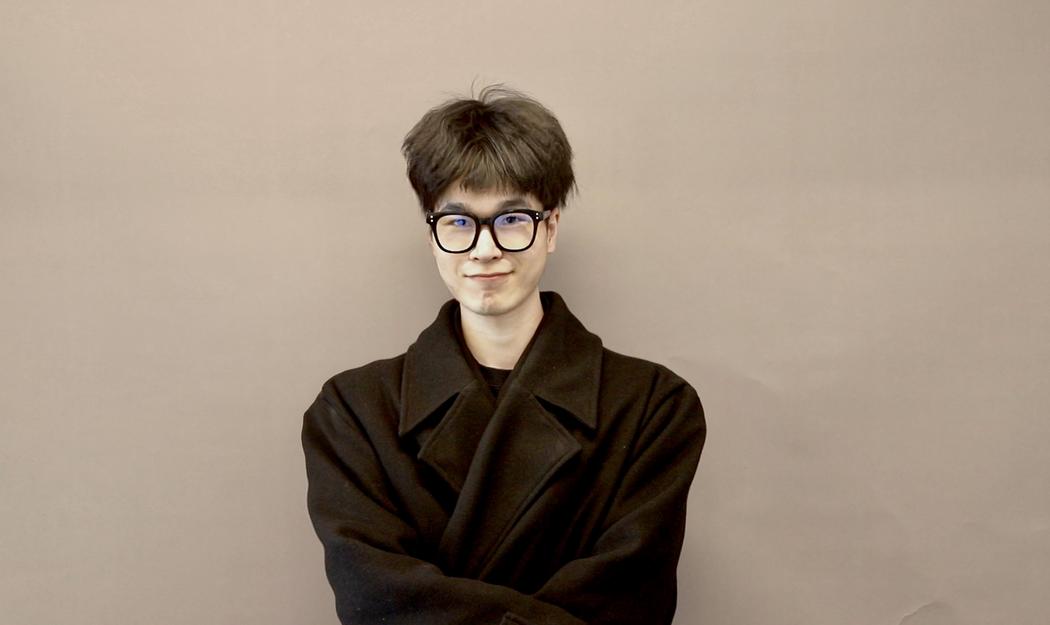
Leave a Reply